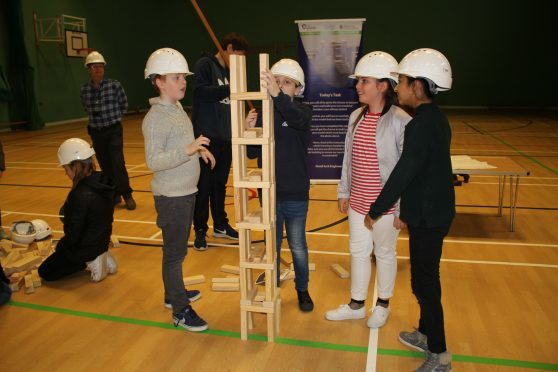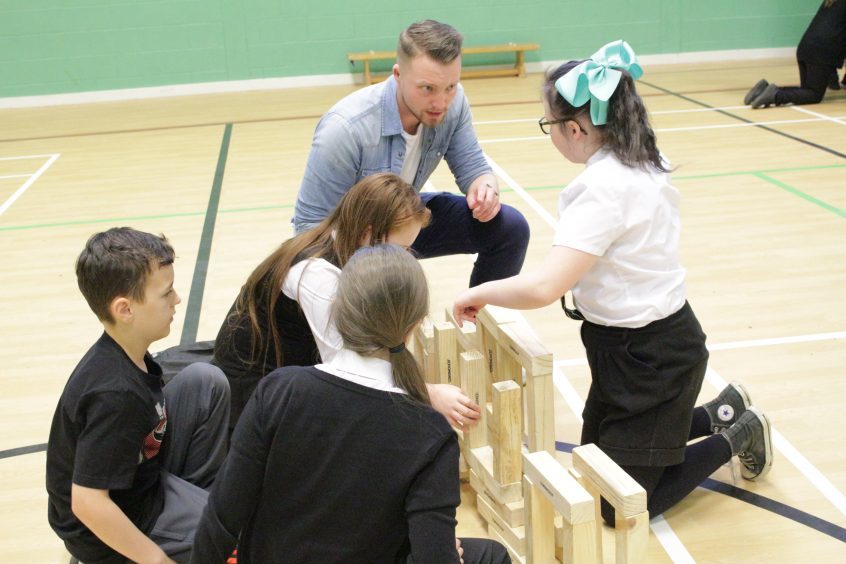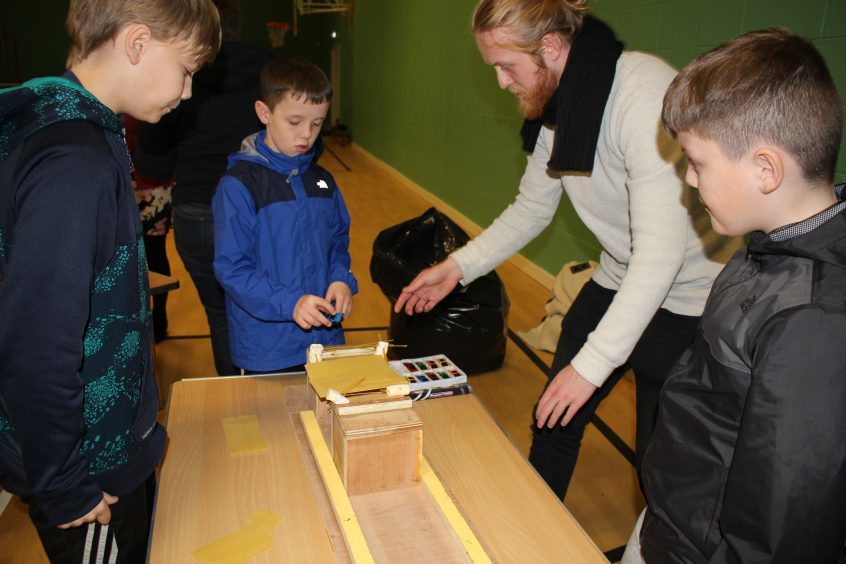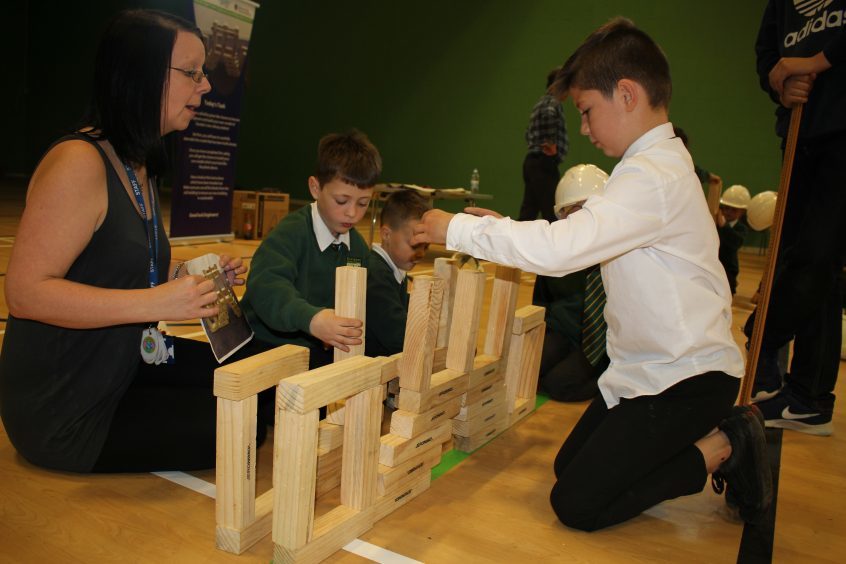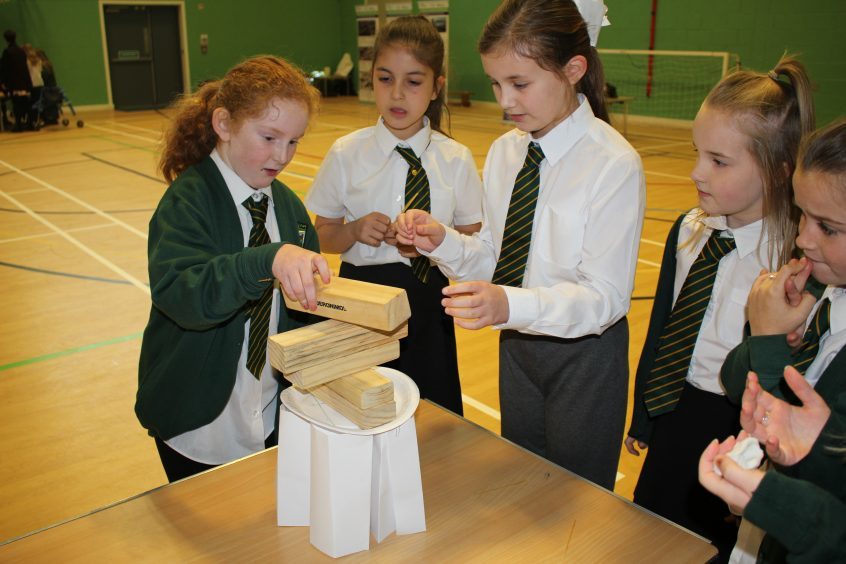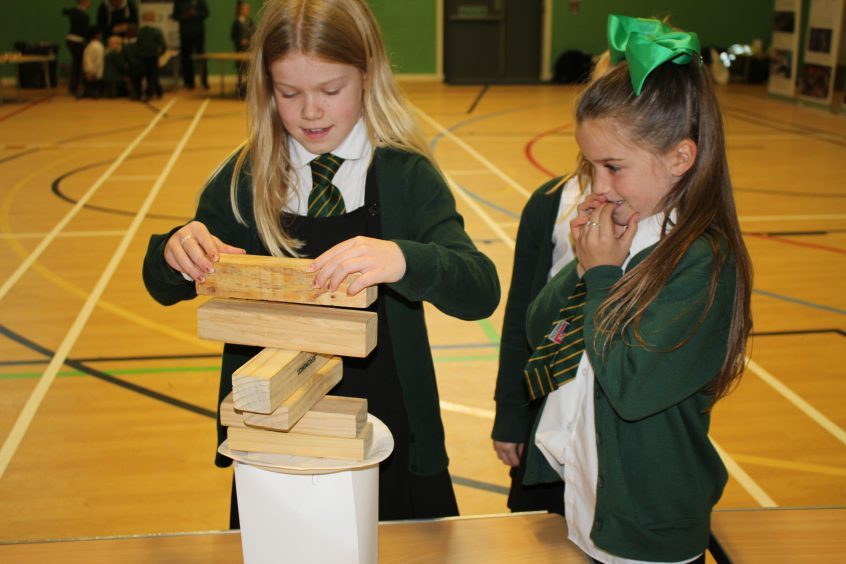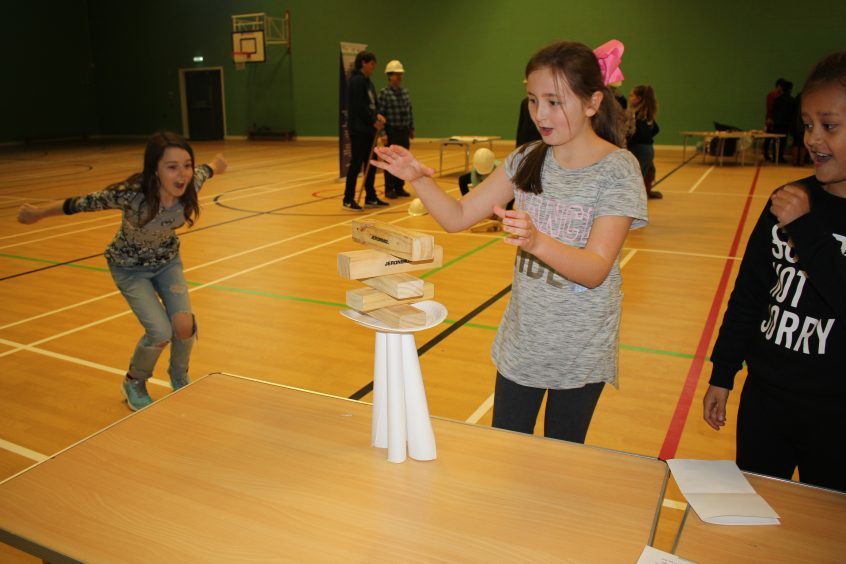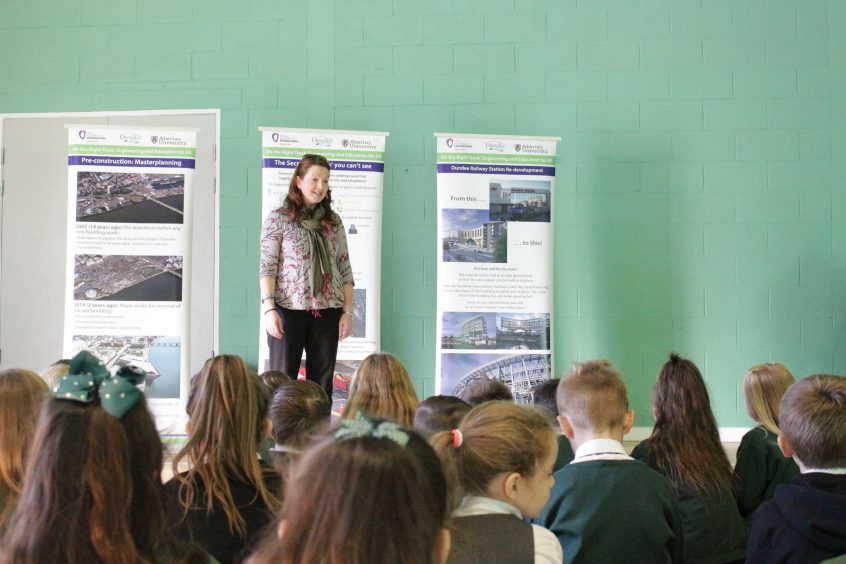An Abertay University engineering project has reached more than 1,500 school pupils and their families since being launched last year.
Staff from the institution organised a series of engagement activities designed to teach youngsters across Tayside and Fife about civil engineering while improving the communication skills of engineers themselves.
Using the new Dundee Railway Station project as a focal point, organisers created sessions and construction tasks for schools Dundee and Fife science festivals.
The children learned about the complexities of operating the project over live railway lines, removing the old railway station and building the foundations.
Research project officer Alison Duffy, who coordinates the scheme for Abertay with Dr Dan Gilmour and Neil Berwick, said: “It’s never too early to get children interested in education and this project has been a tremendous way to engage pupils in engineering.
“For our volunteer engineers, the experience of communicating working methods to such a young and enthusiastic audience has been invaluable, and both children and parents have been completely engrossed during the sessions.”
Fife schools including Crossgates, Hill of Beath, Lochgelly West, Coaltown of Balgonie, Carleton, Rumbleton and Warout all took part.
In Dundee, Craigowl, St Peter and Paul’s and Grove Academy were involved, while in Angus the engineers engaged with Carlogie Primary and Websters High.
The sessions included family drop-in workshops where parents and children were encouraged to construct and compete against each other.
Meanwhile, volunteer engineers were challenged to explain complex engineering and scientific ideas and processes confidently and avoiding any jargon.
The project was funded by the Royal Academy of Engineering’s Ingenious scheme, which links school children and members of the public with engineers and related disciplines such as construction or transport.
Ingenious has funded nearly 200 projects to date, providing opportunities for over 5,000 engineers to take part and gain communication skills by bringing engineering to society.
The project was launched in 2016 and is due to come to an end next year.
